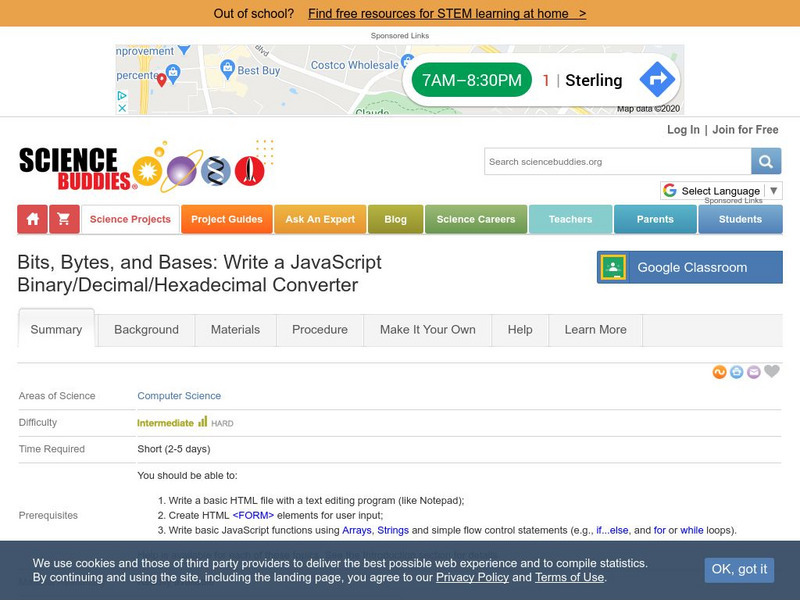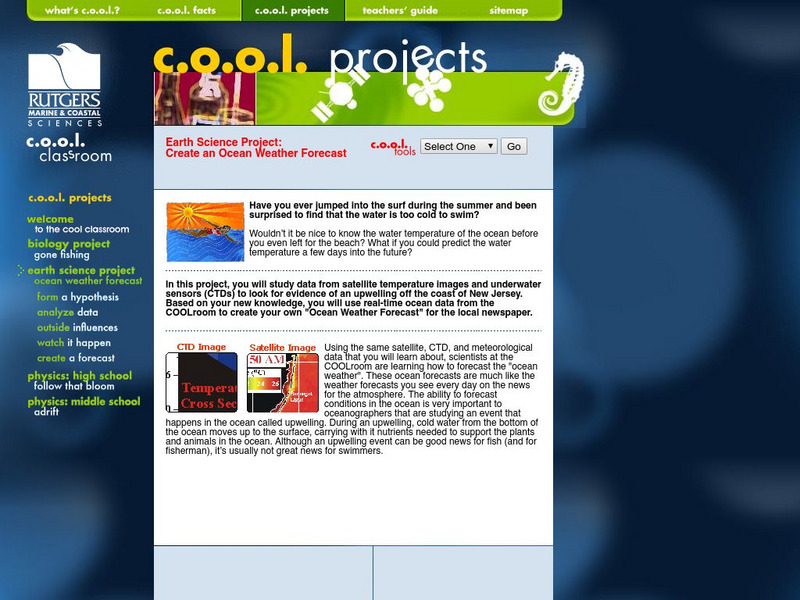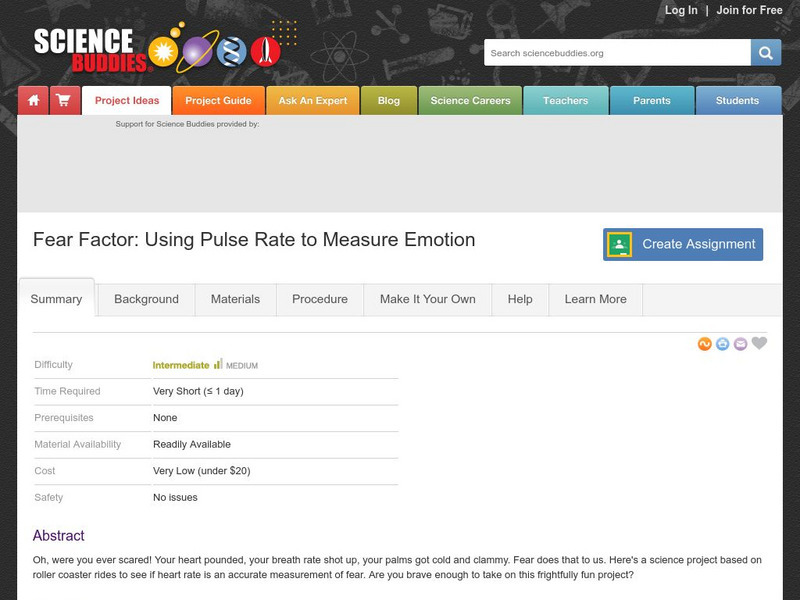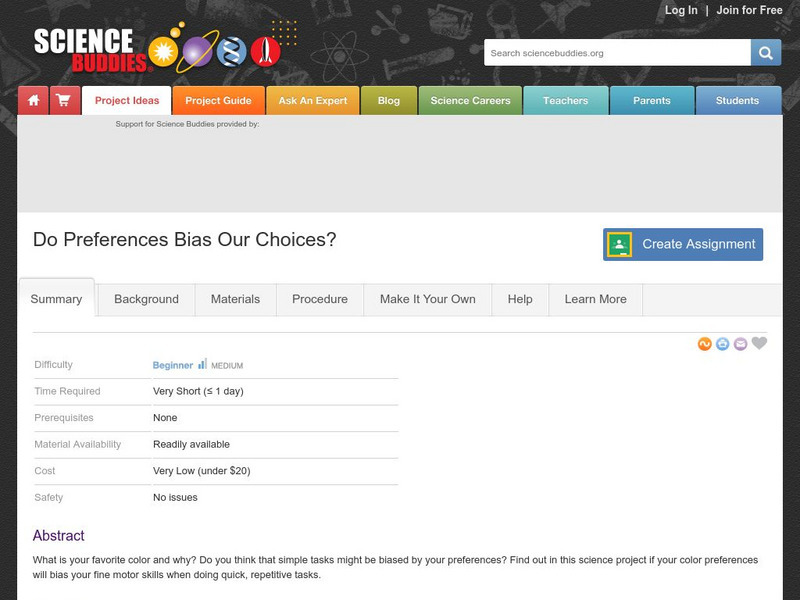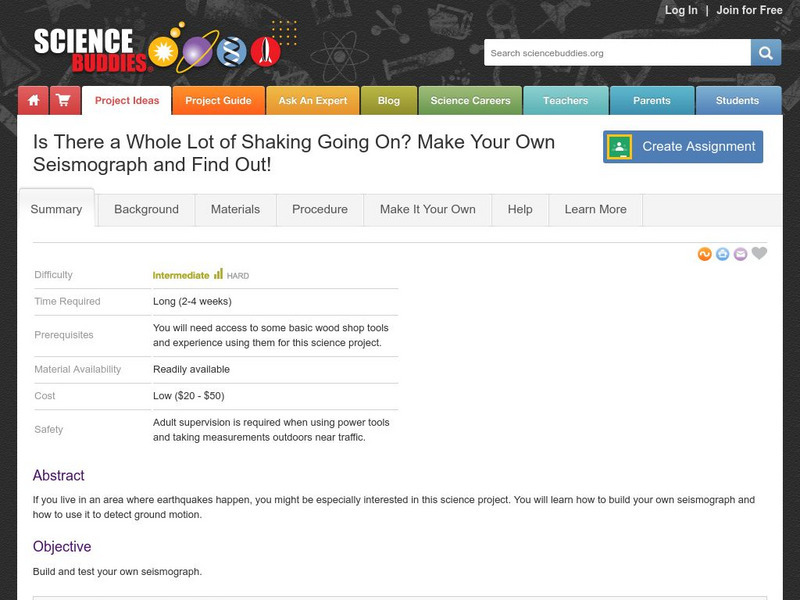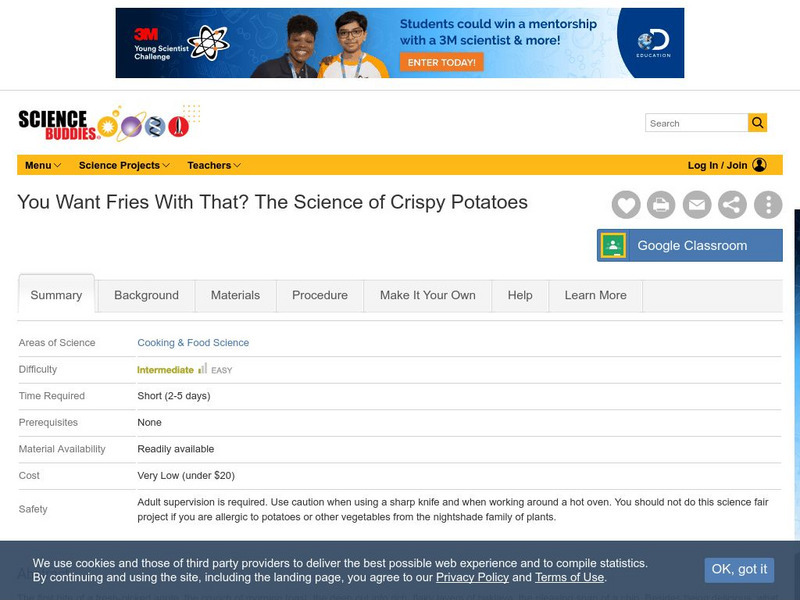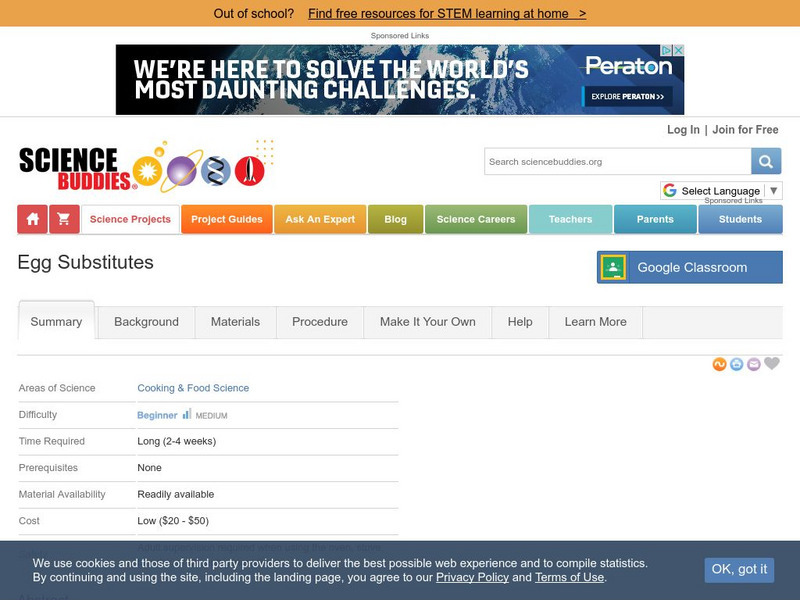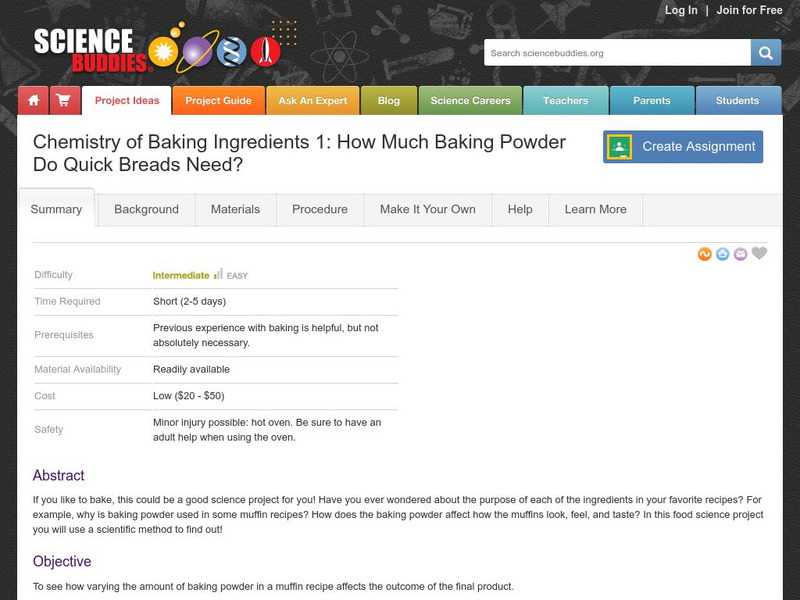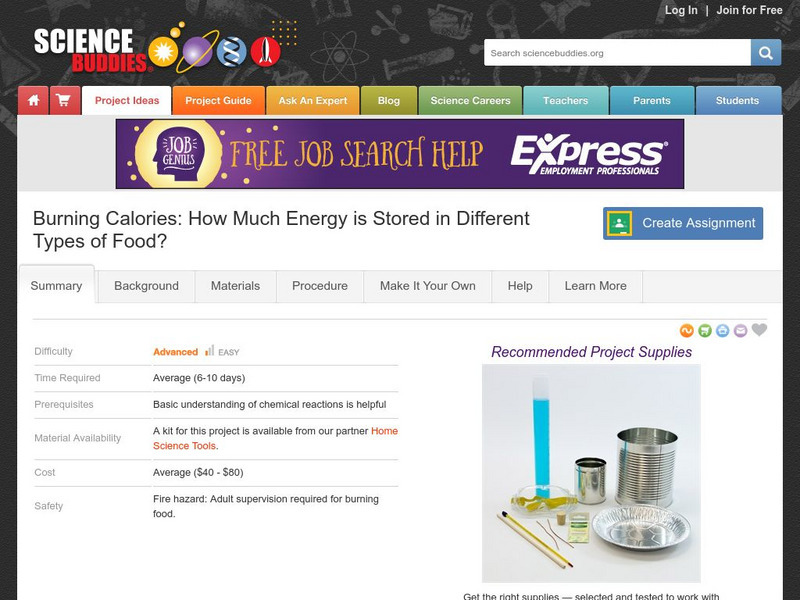Science Buddies
Science Buddies: Write a Java Script Binary/decimal/hexadecimal Converter
This is a challenging first computer science project. You'll learn the basics of how digital devices can represent numbers using only 0's and 1's, and you'll write a JavaScript program to convert numbers between binary, decimal and...
Other
Rutgers: c.o.o.l. Class: Earth Science Project: Create an Ocean Weather Forecast
Want to learn how to forecast ocean weather? This c.o.o.l. project lists each of the steps in the scientific process, and has you work through each in this earth science based project.
Science Buddies
Science Buddies: Investigate Native Plant Evolution With Chloroplast Sequencing
Most native plants are not very well studied. One way we learn more about these plants is by studying the species of plants they are most closely related to. In this science project you will sequence part of the chloroplast genome from a...
Science Buddies
Science Buddies: How Much Dna Can You Pack Into a Cell?
This project asks you to find out just how much DNA can be fit into a cell. Whether animals with a bigger genome need a larger cell nucleus to store its DNA is uncertain. However, by trying your hand at this science project you can find...
Science Buddies
Science Buddies: Make Your Own Piezoelectric Pickup for Acoustic Guitar
In this project you'll learn how to make a piezoelectric pickup for acoustic guitar using inexpensive components. You can then connect your acoustic guitar to an amplifier, and record your own music. If you are interested in electronics...
Science Buddies
Science Buddies: The Chemistry of Hair Highlights
Have you ever tried to make parts of your hair lighter than the rest of your hair? Perhaps the way you tried to do it did not lighten it or maybe it turned out a shade of orange. With this science project you can understand why.
Science Buddies
Science Buddies: Fear Factor: Using Pulse Rate to Measure Emotion
Do you remember a situation when you heart pounded, your breath rate shot up, and your palms got cold and clammy? Fear does that to us. Here's a science project based on roller coaster rides to see if heart rate is an accurate...
Science Buddies
Science Buddies: Levitating Magnets: Floating Isn't Just for Magicians
If you ever seen a magician float an object in the air, you might think that levitation is just a magic trick, but the truth is you can use an invisible physical force to levitate a magnet. Try this simple, week-long science project to...
Science Buddies
Science Buddies: Slime Chemistry
Have you ever wondered how fun toys like Silly Putty, Gak, and Slime are made? These products are so much fun because of the properties of polymers, which make them delightfully bouncy, stretchy, sticky, moldable, breakable, hard, soft,...
Science Buddies
Science Buddies: Do Preferences Bias Our Choices?
In this science project you will test whether color preference will affect repetitive tasks that require fine motor coordination, like picking up small objects very quickly. Find out if your color preferences will bias these repetitive...
Science Buddies
Science Buddies: What's All That Shaking? Make Your Own Seismograph!
If you live in an area where earthquakes happen, you might be especially interested in this science project. You'll learn how to build your own seismograph and how to use it to detect ground motion.
Science Buddies
Science Buddies: You Want Fries With That? The Science of Crispy Potatoes
The first bite of a fresh-picked apple, the crunch of morning toast, the deep cut into rich, flaky layers of baklava, the pleasing snap of a chip. Besides being delicious, what do these foods have in common? They're crisp. They have a...
Science Buddies
Science Buddies: Egg Substitutes
Egg allergies are not uncommon, therefore many egg substitutes are sold in order to bake, and cook recipes that call for them. In this science project idea, you'll investigate how to modify recipes so that even egg-allergic friends and...
Science Buddies
Science Buddies: Follow the Bouncing Ball: A Web Animation Project
This project is a fun way to try your hand at programming. You'll learn how to create some simple animations, and you'll perform tests and make measurements to help you create more realistic-looking animations. All you need to get...
Science Buddies
Science Buddies: Point of a Parabola: Focusing Signals for a Better Wireless Net
Here's a project with practical applications for homes with a wireless network. This project shows you how to build and test parabolic reflectors for the transmitters on your network. You may be able to increase the range of your...
Science Buddies
Science Buddies: Computer Sleuth: Identification by Text Analysis
Here's a project where you can try your hand at being a detective with your computer. In this project you'll write a program to do some basic analysis of features of written text (for example, counting the length of each word in the...
Science Buddies
Science Buddies: The Perfect Marriage of Computer Science & Medicine
Find out the real explanation for why your parents are so weird. Here is a project that lets you explore the internet to find out why your "DNA blueprint" is so important to health and disease. In this project you will use methods that...
Science Buddies
Science Buddies: How Fast Is Your Computer?
Computer technology continues to develop at a rapid pace. A new home computer is noticeably faster than a machine from five years ago, and dramatically faster than a machine from ten years ago. Exactly how much faster? This project will...
Science Buddies
Science Buddies: It's Raining, It's Pouring: Chemical Analysis of Rainwater
Here is an interesting project that could be approached from several different scientific angles: Environmental Science, Weather & Atmosphere, Chemistry, or Plant Biology. You can probably think of your own variations to emphasize...
Science Buddies
Science Buddies: Program to Check a Sudoku Solution
Sudoku puzzles have become extremely popular over the past couple of years. You can find books of puzzles for beginners to experts, and many newspapers print Sudoku puzzles daily. This project challenges you to write a computer program...
Science Buddies
Science Buddies: How Much Baking Powder Do Quick Breads Need?
If you like to bake, this could be a good project for you. There is a purpose for each of the ingredients in your recipes, but not everyone is always aware of what that purpose may be. Though this lab takes multiple days, you will...
Science Buddies
Science Buddies: Can Baking Soda Substitute for Baking Powder in a Recipe?
There's nothing quite like the smell of fresh-baked muffins for breakfast on a Saturday morning. If you're into baking, you might want to try this insightful project that lets you witness the chemistry behind making muffins. You'll get...
Science Buddies
Science Buddies: Determining Iodide Content of Salt
In this week long "kitchen chemistry" project you will use chemicals from the supermarket to test for the presence of iodine and iodide in salt. These are common micronutrients added to some preparations of table salt. A materials list,...
Science Buddies
Science Buddies: How Much Energy Is Stored in Different Types of Food?
In this project you'll learn a method for measuring how much chemical energy is available in different types of food. You will build your own calorimeter to capture the energy released by burning a small food item, like a nut or a piece...
Other popular searches
- 4th Grade Science Project
- Physical Science Projects
- Science Project on Pulleys
- Science Project Volcano
- Science Project Gravity
- Science Project Ideas
- Forensic Science Project
- Science Fair Project Ideas
- Rock Science Project
- Science Project Food
- Science Project Terrarium
- Science Fair Project Data
